I've got a list of dictionaries of dictionaries... Basically, it is just big piece of JSON. Here how looks like one dict from a list:
{'id': 391257, 'from_id': -1, 'owner_id': -1, 'date': 1554998414, 'marked_as_ads': 0, 'post_type': 'post', 'text': 'Весна — время обновлений. Очищаем балконы от старых лыж и API от устаревших версий: уже скоро запросы к API c версией ниже 5.0 перестанут поддерживаться.\n\nОжидаемая дата изменений: 15 мая 2019 года. \n\nПодробности в Roadmap: https://vk.com/dev/version_update_2.0', 'post_source': {'type': 'vk'}, 'comments': {'count': 91, 'can_post': 1, 'groups_can_post': True}, 'likes': {'count': 182, 'user_likes': 0, 'can_like': 1, 'can_publish': 1}, 'reposts': {'count': 10, 'user_reposted': 0}, 'views': {'count': 63997}, 'is_favorite': False}
And I want to dump each dict to frame. if I just do
data = pandas.DataFrame(list_of_dicts)
I get a frame where are only two columns: first one contains keys, and another one contains data, like this:

I tried doing it in a loop:
for i in list_of_dicts:
tmp = pandas.DataFrame().from_dict(i)
data = pandas.concat([data, tmp])
print(i)
But I face ValueError:
Traceback (most recent call last):
File "/home/keddad/PycharmProjects/vk_group_parse/Data Grabber.py", line 68, in <module>
main()
File "/home/keddad/PycharmProjects/vk_group_parse/Data Grabber.py", line 61, in main
tmp = pandas.DataFrame().from_dict(i)
File "/home/keddad/anaconda3/envs/vk_group_parse/lib/python3.7/site-packages/pandas/core/frame.py", line 1138, in from_dict
return cls(data, index=index, columns=columns, dtype=dtype)
File "/home/keddad/anaconda3/envs/vk_group_parse/lib/python3.7/site-packages/pandas/core/frame.py", line 392, in __init__
mgr = init_dict(data, index, columns, dtype=dtype)
File "/home/keddad/anaconda3/envs/vk_group_parse/lib/python3.7/site-packages/pandas/core/internals/construction.py", line 212, in init_dict
return arrays_to_mgr(arrays, data_names, index, columns, dtype=dtype)
File "/home/keddad/anaconda3/envs/vk_group_parse/lib/python3.7/site-packages/pandas/core/internals/construction.py", line 51, in arrays_to_mgr
index = extract_index(arrays)
File "/home/keddad/anaconda3/envs/vk_group_parse/lib/python3.7/site-packages/pandas/core/internals/construction.py", line 320, in extract_index
raise ValueError('Mixing dicts with non-Series may lead to '
ValueError: Mixing dicts with non-Series may lead to ambiguous ordering.
How, after this, I can get dataframe with one post (one dictionary in the list is one post) and all the data in it as columns?